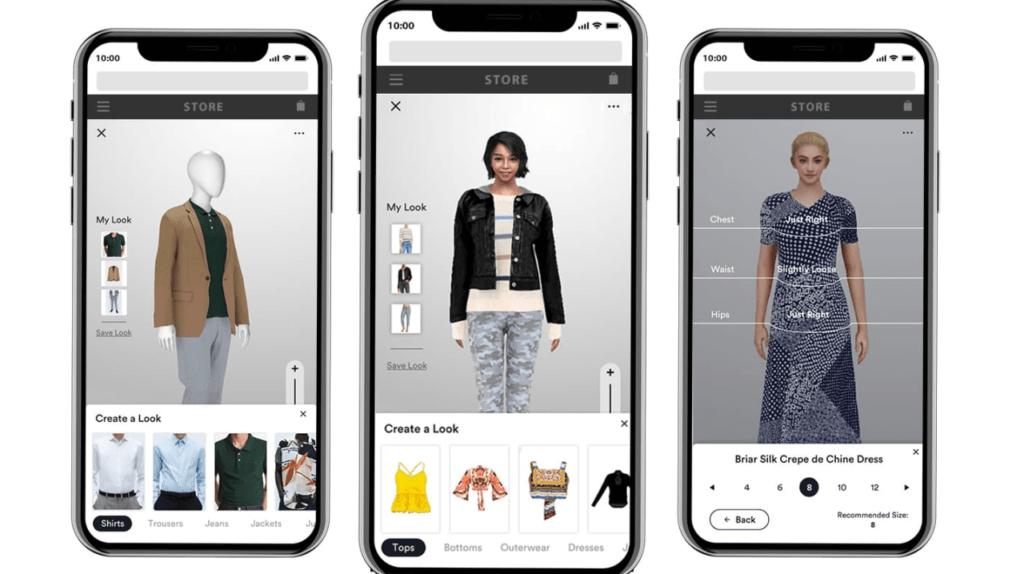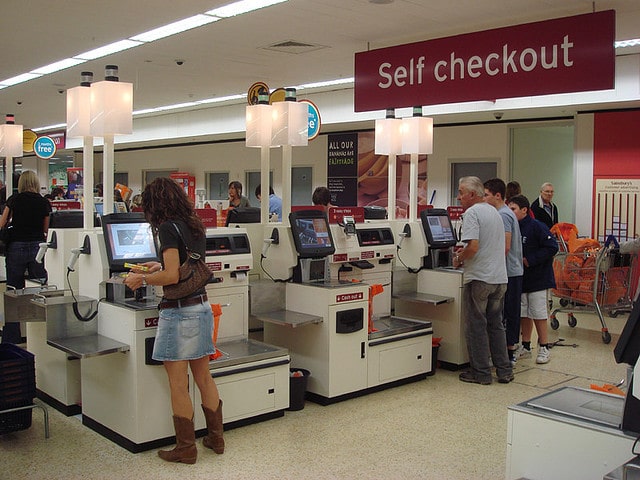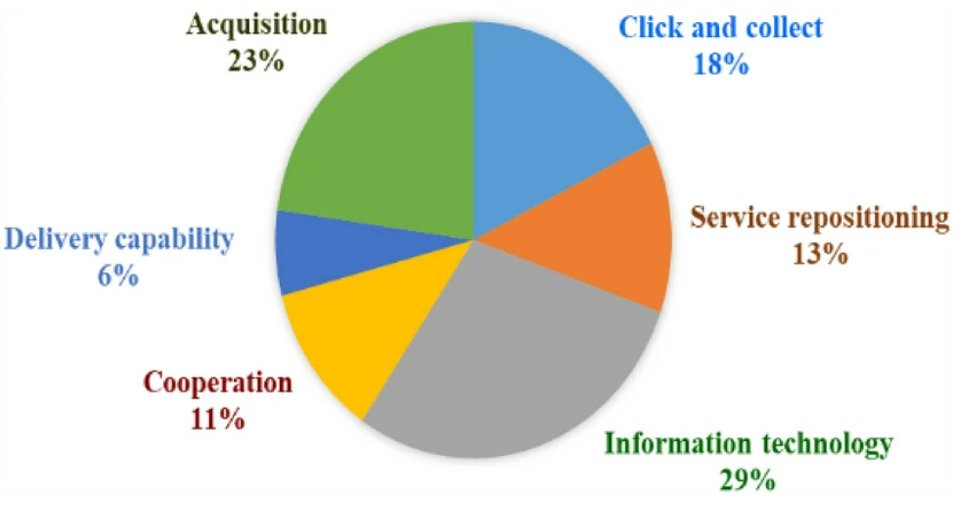Omnichannel Marketing In A Nutshell
Omnichannel marketing provides consumers with a seamless and integrated shopping experience across all physical and digital channels. Omnichannel experience ensures that consumers can interact and build relationships with brands as consistently and effortlessly as possible.
The Evolution of Single-Multi-Omnichannel Marketing
Research on consumer motivations for omnichannel retailing shows that the development of omnichannel marketing stems from the evolution of the single-multi-omni process. Decades ago, retailers only sold their products through a single channel, traditionally a physical store. Since the advent of the Internet and E-Commerce, multi-channel shopping has emerged as companies extend their sales distribution to the digital world, adopting a hybrid business model.
Yet, multichannel marketing only focuses on the independent growth of each channel, which means there will be few connected services to engage customers. For instance, consumers who buy products online may not be able to return them in physical stores due to the lack of consistent customer data management. This matter leads businesses to come up with omnichannel marketing in which there will be no barrier between the physical and online worlds.
2 Primary Behaviors in Omnichannel Marketing
1. Showrooming
Showrooming occurs when consumers visit brick-and-mortar stores to explore and interact with products in person, often seeking in-store guidance from sales assistants. They sometimes use their mobile devices or other digital features to compare prices, read reviews, source products’ origin, etc. Yet, instead of making the purchase in-store, these shoppers buy their items online, typically after leaving the store.
This omnichannel behaviour often applies to high-involvement product categories such as electrical goods, apparel, etc., which require customers to think rationally and carefully before making buying decisions.
Here are some showrooming-oriented omnichannel services:
- Click-and-Collect: This service allows customers to browse and purchase items online and then pick them up at a physical store. It caters to showrooming behaviour by enabling customers to research and buy online while leveraging the convenience of offline pickup.
- Virtual Try-On: Some retailers offer virtual try-on experiences where customers can use augmented reality (AR) or virtual reality (VR) technology to visualise how products would look on them before purchasing.
- In-store digital screens: Retailers may provide digital kiosks or screens in physical stores where customers can access detailed product information, reviews, and recommendations to support showrooming behaviours.

2. Web rooming
Webrooming is the opposite of showrooming. Consumers begin their buying journey online, using various digital channels to find information on products, compare prices, read reviews, and gather information. However, instead of completing the transaction online, they prefer to visit a physical store to purchase in person.
Webrooming behaviours vary from product to product, which may include groceries and everyday essentials, healthy and personal care products, home improvement, etc.
Here are some web rooming-oriented omnichannel services:
- Reserve Online, Pay In-Store: This service allows customers to reserve products online and then complete the purchase in-store. It caters to web rooming behaviour by enabling customers to research products online and then finalise the transaction in person.
- Scan and Go: With scan-and-go technology, customers can use their smartphones to scan items as they shop in-store and then pay through a mobile app, skipping the traditional checkout process.
- Self-Checkout: Self-checkout areas in physical stores allow customers to scan and pay for their items without the assistance of a cashier. This service caters to web rooming behaviour by offering an efficient and convenient checkout option for customers who prefer to shop in-store after researching products online.

The Rise of Omnichannel Marketing
1. The growth of E-Commerce since the Covid-19
In 2023, global retail e-commerce sales reached 5.8 trillion dollars. According to Statista, the industry will expect to experience a 39% growth in total revenue in the next few years, hitting around $8 trillion by 2027. The rise of E-Commerce can be put down to several lockdowns around the world during the pandemic. E-commerce allows shoppers to purchase products online and wait for home delivery the next day, which is an effortless, time-saving, and flexible shopping experience.
Research on the impact of Covid-19 on consumer behaviours shows that safety and health concerns have transformed how people shop. Since the Covid-19 Pandemic, consumers have adopted more contactless shopping experiences such as using augmented reality to try on products, using click-and-collect services, etc. The vulnerability and severity of Covid-19 contribute to the overall perceived fear, driving people to behave differently to ensure their self-protection. In other words, the increasing awareness of the adverse impact of Covid-19 has given rise to omnichannel marketing, which is believed to be the future of retailing thanks to its interactive and relational nature.
2. Shifting Consumer Behaviors
‘Today consumers have adopted a channel-switching shopping habit to leverage all channels and make more informed decisions.
Consumers now value personalisation more than anything else.’
Consumers take full advantage of physical and digital touchpoints to get the best out of their shopping experience and make more informed decisions. Many adopt a channel-switching behaviour in which they use a variety of channels for different purposes, from product discovery and price comparison to stock checking. A survey by PwC in 2024 shows that people capitalise on 5 primary channels to discover and find information on products. They use in-store support for detailed specifications, they consult their friends and family, they read reviews on digital marketplaces such as Amazon, they search for comparisons on Google and social media, etc.
Secondly, with the development of advanced technology in marketing, 71% of consumers now expect hyper-personalisation for their shopping, which means brands have to cater to each shopper’s preferences and needs. The tech-powered shopping experience is on the rise, with over half of shoppers preferring immersive buying experiences which integrate virtual features into the real world.
3. The Popularity of Mobile Shopping
Most of the omnichannel behaviours are reported to take place on mobile devices. This is because smartphones have been integrated with various digital features which allow consumers to do anything they want during the buying journey. In the UK, nearly 100% of citizens in the 16-54 age group had a smartphone in 2023 and this constituted 80% of online visits to e-commerce platforms and 70% of online orders.
In other words, mobile devices are perceived as a multi-functional shopping method for the masses. From our smartphones, we can get access to social media apps to discover products, discuss with friends and social networks, and make purchases with integrated shopping features. We can also download brands’ apps to browse products, pay online, and use other omnichannel services.
Among the mobile features, contactless payment is on the rise due to its ease and convenience. Statistically, 70% of British shoppers make purchases with smartphones, this year will witness the mass adoption of tap-and-pay or contactless payments such as Apple Pay and other digital wallets. Even the elderly have already adopted this habit.
Read More: The Rise of Click and Collect (C&C) and New Shopping Behaviors
What Drives Omnichannel Behaviors?
1. Lifestyle as a key factor
Understanding consumer behaviours is a prerequisite for building omnichannel marketing success. Yet, to figure out how consumers behave in certain patterns, brands have to delve into their daily lifestyles which directly contribute to how people think, feel, and act. A study of shopping behaviours in omnichannel marketing discovers 3 types of lifestyle and value-seeker.
a. Fashion-forward and hedonistic customers – Gen Z
First, we have a group of people who are likely to value novelty, and enjoyment in their shopping experiences. They are willing to embrace new technologies and platforms that enhance their buying journey and make their decisions much easier. Gen Z (12-27) exemplifies this customer base since the majority of them were born and raised in the Internet era. According to Statista, with easy access to the Internet, social media, and mobile devices, Gen Z is undoubtedly an early adopter of omnichannel shopping and transactions.
Omnichannel marketing for these tech-savvy shoppers requires brands to be very innovative with their offerings. Brands can cater to these consumers by providing engaging and interactive omnichannel experiences that align with their lifestyle preferences, such as personalised recommendations, in-app immersive shopping features, and social media integration.
b. Practical Shoppers – Millennials
Practical shoppers are individuals who value functionality and utilitarian benefits when making their buying decisions. They see omnichannel shopping as a means to streamline their purchasing process, save time, and access products or services easily across different channels. They are typically millennials (28-42) who are too overwhelmed with their daily schedule to think about enjoying their shopping experiences.
For them, omnichannel services such as click-and-collect, self-checkout, etc. provide convenience and flexibility. Thus, omnichannel marketing for these individuals should prioritise efficiency and ease of use of the services, understanding what benefits they are searching for throughout the journey, ranging from easy navigation, and timesaving online payments to a hassle-free return process.
2. Consistency and Seamlessness
Consumers perceive the effectiveness of omnichannel marketing based on the quality and efficiency of services offered at various stages of their shopping journey. This includes critical features such as payment methods, stock availability checks, delivery times, pick-up points, and special offers. The more seamlessly these services are integrated across digital and physical channels, the more effective consumers perceive the omnichannel experience to be.
Besides, research on consumer omnichannel adoption behaviour found that the level of consistency also affects people’s intention to use omnichannel services. If consumers are satisfied with the harmony of product information, pricing, assortment, and other available services across digital and physical channels, they will be more likely to adopt the habit and rely on this method for their future needs.
To conclude, brands need to ensure that the information related to products, prices, sales promotions, etc. they provide across channels must be consistent and transparent. Any misalignment in services such as the difference in in-store prices and online prices may deter consumers from using omnichannel services.
Key Drivers of Omnichannel Marketing Success
Research on determinants of omnichannel marketing success after the pandemic in 2023 has figured out 6 factors that companies should consider when building their omnichannel strategies: information technology, service repositioning, click-and-collect, acquisition, delivery capability, and cooperation (see figure below).

- Information Technology (29%): the infrastructure that supports omnichannel marketing, including systems for managing customer data, order management, inventory management and content delivery across all channels.
What brands can do: brands should prioritise investing in a customer relationship management system that centralises customer data across channels. Besides, real-time inventory visibility should be carefully managed to ensure consistency of available stocks on both physical and digital sales channels. - Acquisition (23%): tactics used to attract new customers on various touchpoints
What brands can do: brands can develop omnichannel marketing campaigns utilising a mix of social media marketing, SEO, and mobile devices to attract new customers and drive engagement. - Click-and-collect (18%): a fulfilment option that allows customers to order online and pick up their purchases at a designated collecting point.
What brands can do: provide click-and-collect as a fulfilment option for online orders and ensure a seamless in-store experience by streamlining pickup processes and optimizing store layouts. - Delivery Capability (6%): ability to deliver products to customers in a timely and efficient manner.
What brands can do: brands must ensure a fulfilment network that can meet customer delivery expectations, including fast and efficient shipping options. Besides, diverse delivery options should be provided to cater to different needs and preferences such as same-day delivery, standard delivery, etc. - Service Repositioning (13%): adapting customer service strategies to meet the omnichannel experience.
What brands can do: new training programs should be devised to educate staff on how to deliver omnichannel services effectively. Some necessary skills involve how to address customer inquiries, resolve issues, and create positive experiences. - Cooperation (11%): the breakdown of silos between different departments within a company to ensure a unified omnichannel experience.
What brands can do: firms should foster a culture of collaboration between marketing, sales, customer service, and IT departments to ensure a unified omnichannel experience and encourage cross-functional teams to work together towards common goals and objectives.
The Effects of Omnichannel Marketing Success
1. A higher level of customer satisfaction
Successful omnichannel marketing ensures consistency in communications and experiences across all channels. If consumers check stocks online, reserve their items, and then go to the nearest brick-and-mortar store to finish the final transaction easily and effortlessly, they will be much more likely to become highly satisfied consumers and loyal to the brand. Consistency gives people a sense of security and trust, which helps brands build up their shoppers’ satisfaction.
2. Increase Word-of-Mouth Intent
Another research on word of mouth in omnichannel marketing explains that as omnichannel marketing allows consumers to freely and seamlessly employ and switch channels during the journey, it is easier for them to engage and immerse themselves in the shopping experience. People can access information, compare products, and make purchases across various touchpoints without any barrier between the online and physical worlds.
This leads shoppers to a psychological state or flow state where they are fully absorbed and deeply focused on the buying activity. The study also found that the flow state creates a feeling of satisfaction and fulfilment. These are important signals of word-of-mouth intent as the more satisfied consumers are, the more inclined they will share their positive feelings with others.
3. Omnichannel vs. Single Channel
It is reported that omnichannel shoppers spend 10% more online and 4% more in physical stores than single-channel buyers because of the more personalised and interactive experience they have. Besides, omnichannel buyers are more likely to recommend or write reviews about their shopping experiences than single-channel ones as customer review is one of their primary sources of information. The more reviews they read, the more they are willing to write their own content.
Read More: Everyday Low Pricing Strategy (EDLP) – The Case Study of Aldi
Academic Sources for this blog:
Kang, J.Y.M. (2019) What drives omnichannel shopping behaviors?: Fashion lifestyle of social-local-mobile consumers. Journal of Fashion Marketing and Management. 23(2), pp.224-238.
Liu, F., Fang, M., Cai, L., Su, M., and Wang, X. (2022) Consumer Motivations for Adopting Omnichannel Retailing: A Safety-Driven Perspective in the Context of COVID-19. Frontiers in Public Health. 9, p.708199.
Park, J., and Kim, R.B. (2021) The effects of integrated information & service, institutional mechanism and need for cognition (NFC) on consumer omnichannel adoption behavior. Asia Pacific Journal of Marketing and Logistics. 33(6), pp.1386-1414.
Wu, P.J. (2023) O2O switching determinants and successful drivers in omnichannel retailing services. Service Business. 17(3), pp.771-788.
Sy Chu
As an analytical and creative marketing enthusiast skilled in customer analysis, content research and brand management, my passion is help businesses gain insights into their brand and marketing strategies to drive impactful outcome to their success.

First time I’ve read a blog like this. It’s quite academic but very informative and straight to the point. Keep it up!